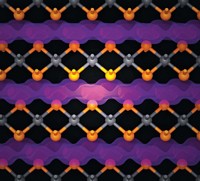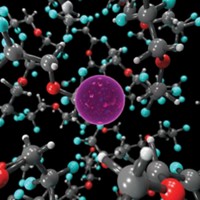Advertisement
Grab your lab coat. Let's get started
Welcome!
Welcome!
Create an account below to get 6 C&EN articles per month, receive newsletters and more - all free.
It seems this is your first time logging in online. Please enter the following information to continue.
As an ACS member you automatically get access to this site. All we need is few more details to create your reading experience.
Not you? Sign in with a different account.
Not you? Sign in with a different account.
ERROR 1
ERROR 1
ERROR 2
ERROR 2
ERROR 2
ERROR 2
ERROR 2
Password and Confirm password must match.
If you have an ACS member number, please enter it here so we can link this account to your membership. (optional)
ERROR 2
ACS values your privacy. By submitting your information, you are gaining access to C&EN and subscribing to our weekly newsletter. We use the information you provide to make your reading experience better, and we will never sell your data to third party members.
Materials
‘Flat water’ provides a battery boost
Atomically thin liquid layers could help 2-D materials improve energy-storage devices
by Matt Davenport
May 15, 2017
| A version of this story appeared in
Volume 95, Issue 20

A popular approach for developing better batteries and other energy-storage devices is incorporating atoms-thick sheets of solid-state materials. This strategy may hold for liquids, too. Researchers have found that test devices using tungsten oxide electrodes have improved energy-storage kinetics when thin layers of water are confined between crystalline WO3 sheets (Chem. Mater. 2017, DOI: 10.1021/acs.chemmater.6b05485). Hydrated electrodes charge and discharge faster than their anhydrous counterparts, reports a team led by Veronica Augustyn of North Carolina State University. Further, the hydrated material better maintains its charge capacity and energy efficiency at these faster timescales. The intercalated water layers likely lower the energetic barrier encountered by ions moving from liquid electrolytes to solid electrodes, although the team is investigating this hypothesis. Tungsten oxide provides a good model system for these types of fundamental studies, though the material is too heavy for commercial applications, Augustyn says. Still, she’s not alone in thinking this work can help further develop other, more attractive materials, including two-dimensional carbides and nitrides known as MXenes (pronounced max-enes). “I’m confident this concept can be applied to many other 2-D and layered materials, helping us to develop high-power and high-energy-storage devices,” comments MXene pioneer and innovator Yury Gogotsi of Drexel University.




Join the conversation
Contact the reporter
Submit a Letter to the Editor for publication
Engage with us on Twitter